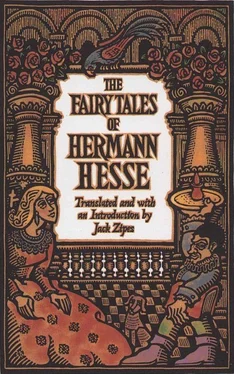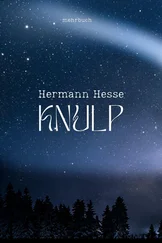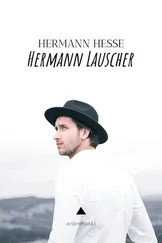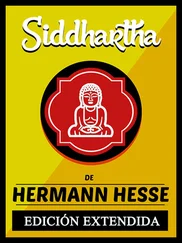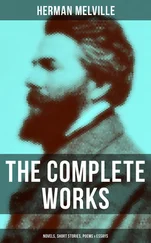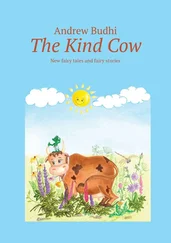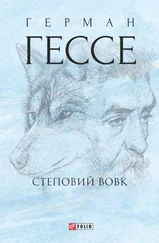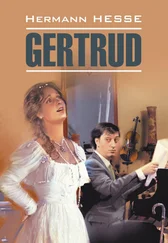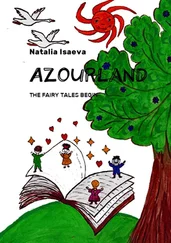Hermann Hesse - The Fairy Tales of Hermann Hesse
Здесь есть возможность читать онлайн «Hermann Hesse - The Fairy Tales of Hermann Hesse» весь текст электронной книги совершенно бесплатно (целиком полную версию без сокращений). В некоторых случаях можно слушать аудио, скачать через торрент в формате fb2 и присутствует краткое содержание. Год выпуска: 1995, ISBN: 1995, Издательство: Bantam Books, Жанр: Классическая проза, Сказка, на английском языке. Описание произведения, (предисловие) а так же отзывы посетителей доступны на портале библиотеки ЛибКат.
- Название:The Fairy Tales of Hermann Hesse
- Автор:
- Издательство:Bantam Books
- Жанр:
- Год:1995
- ISBN:9780553377767
- Рейтинг книги:5 / 5. Голосов: 1
-
Избранное:Добавить в избранное
- Отзывы:
-
Ваша оценка:
- 100
- 1
- 2
- 3
- 4
- 5
The Fairy Tales of Hermann Hesse: краткое содержание, описание и аннотация
Предлагаем к чтению аннотацию, описание, краткое содержание или предисловие (зависит от того, что написал сам автор книги «The Fairy Tales of Hermann Hesse»). Если вы не нашли необходимую информацию о книге — напишите в комментариях, мы постараемся отыскать её.
The Fairy Tales of Hermann Hesse — читать онлайн бесплатно полную книгу (весь текст) целиком
Ниже представлен текст книги, разбитый по страницам. Система сохранения места последней прочитанной страницы, позволяет с удобством читать онлайн бесплатно книгу «The Fairy Tales of Hermann Hesse», без необходимости каждый раз заново искать на чём Вы остановились. Поставьте закладку, и сможете в любой момент перейти на страницу, на которой закончили чтение.
Интервал:
Закладка:
One of the first fairy tales that he ever published is a good example of the technique that he would refine over and over again to realize his own peculiar form of the modern fairy tale. This fairy tale is actually a novella entitled Lulu , and it appeared as part of The Posthumous Writings and Poems of Hermann Lauscher (1900). On the one hand, the incidents in this fairy tale are related to a summer vacation that Hesse spent with friends in August 1899. On the other hand, the work is an aesthetic experiment that reveals his great debt to E.T.A. Hoffmann and the German romantics. The tale concerns the poet Lauscher and two friends who meet in a village during the summer. Both fall in love with a waitress named Lulu, who works in the village inn. They have strange encounters with an eccentric philosopher, who also seems to be strangely involved with Lulu. At the same time, one of the friends has had a fairy-tale dream about a princess named Lilia, who is threatened by a witch named Zischelgift. Lauscher and his friends soon conflate the identities of Lulu and Lilia, and the boundaries between reality, dream, and fairy tale dissolve. Their pursuit of Lulu/Lilia is transformed into a pursuit of the blue flower, a well-known romantic symbol of ideal love and Utopia, Lauscher and his friends are brought back to reality, however, when a fire breaks out in the inn and Lulu and the philosopher mysteriously disappear.
This fairy-tale novella contains poems by Lauscher and his friends and is written in a hyperbolic sentimental manner that makes the story and characters at times appear contrived. Yet despite this artificiality, the novella is the key to understanding the narrative technique that Hesse developed more artistically in the fairy tales that followed. Like the German romantic writers Wilhelm Heinrich Wackenroder, Ludwig Tieck, Novalis, Joseph von Eichendorff, and E.T.A. Hoffmann — all major influences on his work — Hesse sought to blend the worlds of reality and imagination. All kinds of experiences assume startling symbolical meanings that demand interpretation if the Hesse protagonist is to know himself. Only by seeking to go beyond the veil of symbols can the essence of life be grasped. But first the ordinary has to be appreciated as extraordinary through the artful transformation of experience, and this is the task of all of Hesse’s heroes. The obstacles confronting them are not the traditional witches, ogres, tyrants, and magicians but rather science, materialism, war, alienation, and philistinism. Like the German romantics before him, Hesse chose the fairy-tale form paradoxically to demonstrate how difficult it is to make life into a fairy tale, and he preferred tragic and open endings to the uplifting harmonious endings and perfect closure of classical fairy tales. Yet he did not abandon the utopian “mission” of the traditional fairy tale, for even though many of his narratives are tragic, they leave us with a sense of longing, intended to arouse us so that we might contemplate changing those conditions that bring about the degradation of humanity.
In his early tales, such as “The Dwarf” (1904), “Shadow Play” (1906), and “Dr. Knoegle’s End” (1910), Hesse described the process by which harmless individuals with poetic sensibilities are crushed by narrow-minded people. The central question in all his writings concerns whether the individual with a poetic nature, who represents more than Hesse himself as an artist, will be able to come into his own when social conditions are adverse to the arts and humanity. In only a few of his tales, such as “The Beautiful Dream” (1912), “The Poet” (1913), “Flute Dream” (1914), “The Forest Dweller” (1917), and “The Painter” (1918), did Hesse portray young men who rebel, seek, and realize their full potential as artistic human beings. Yet even after successfully undergoing hard experiences and apprenticeships, they are alone in the end, never married, never wealthy. The poet appears to be totally isolated and able to find fulfillment only in his art. Other characters similar to these poet types — like Martin in “Shadow Play” (1906), Augustus in “Augustus” (1913), the climber in “The Difficult Path” (1917), Anselm in “Iris” (1918) — lead terribly painful lives and must come to terms with their alienation. They find solace in death by returning to what appears to be home or the eternal mother.
To a certain extent it is embarrassing to read Hesse’s portrayal of women and their roles. Like many German writers of his generation, Hesse depicted women either as gentle muses who have a mysterious wisdom that men do not possess, or as strong and sensitive martyrs who are in contact with the source of knowledge. When female characters appear in his tales — and very few have any substance — they are generally there to save the men from themselves. Whether young or old, they are associated with eternal harmony, Isis, Maya, truth, and home. All are artificial constructs that seem to smack of an infantile fixation on the mother; yet they represent more than Hesse’s oedipal attachment to his mother or the Oedipus complex itself.
For Hesse, the mother figure and home represented lost innocence, a feeling of oneness with nature and one’s own body that is destroyed by the alienating process of civilization, often represented by norms of material success and science. Given the cruel nature of the institutions of socialization and civilization, which were governed mainly by men, Hesse believed that conformity to their rules and regulations would lead to the perversion of humanity. Adjustment to a sick reality was in itself a sick thing to do. Therefore his protagonists break away from society, often aided by sagacious elderly men on the margins of society. But these men do not suffice because, nonconformists themselves, they cannot help the young men achieve a harmony of opposites. They can only point out the direction that the protagonist must take, often toward a “mystical mother.” The return to the mother at the end of some of Hesse’s tales is a recognition of what has been lost in the process of “civilization” and a refusal to go along with this process any longer. The mother figure is consequently a symbol of refusal to accept a “masculine” or “logical” way of regarding the world that leads to war and destruction.
As we know, Hesse was a staunch opponent of the military, masculine aggressiveness, and war. Some of his very best fairy tales — such as “A Dream About the Gods” (1914), “Strange News from Another Planet” (1915), “If the War Continues” (1917), “The European” (1918), and “The Empire” (1918) — contain passionate critiques of the barbaric mentality and the conditions that engender violence and conflict. Hesse believed, as one can glean from both “The European” and “The Empire,” that nationalism is the most dangerous force because it can inspire people to obsessively seek power and become caught up in war for war’s sake. He never pointed his finger at any particular nation as the major perpetrator of wars. Rather, Hesse believed that there are certain cycles in the world — portrayed in “The City” (1910) and “Faldum” (1916) — that reflect general conditions that either enhance the potential for developing humane societies or lead to barbarism. As his stories reveal, he was convinced that the divisive forces of technology, nationalism, totalitarianism, and capitalism were most detrimental to individual freedom and peaceful coexistence. Therefore his fairy tales repeatedly point to the possibilities of individual refusal and the goal of inner peace.
Taken together, Hesse’s fairy tales, written between 1900 and 1933, record both his own personal journey and the social and political conflicts in Europe of that period. Although he often followed the traditional form of the folk tale in works like “The Three Linden Trees” (1912) or used some of Hans Christian Andersen’s techniques, as in “Conversation with an Oven” (1920) and “Inside and Outside” (1920), he generally preferred to break with the plots and conventions of classical fairy tales to experiment with science fiction, the grotesque and macabre, romantic realism, and dreams, thereby generating his own unique form and style. Here, too, Hesse followed in the tradition of romantic refusal. To be sure, some of his aesthetic experiments lapse into narcissistic musings, as in “A Dream Sequence” (1916), but Hesse’s best tales are filled with a keen sense of longing for a home that is the utopian counterpart to the horrors we continue to witness in our present day and age.
Читать дальшеИнтервал:
Закладка:
Похожие книги на «The Fairy Tales of Hermann Hesse»
Представляем Вашему вниманию похожие книги на «The Fairy Tales of Hermann Hesse» списком для выбора. Мы отобрали схожую по названию и смыслу литературу в надежде предоставить читателям больше вариантов отыскать новые, интересные, ещё непрочитанные произведения.
Обсуждение, отзывы о книге «The Fairy Tales of Hermann Hesse» и просто собственные мнения читателей. Оставьте ваши комментарии, напишите, что Вы думаете о произведении, его смысле или главных героях. Укажите что конкретно понравилось, а что нет, и почему Вы так считаете.
